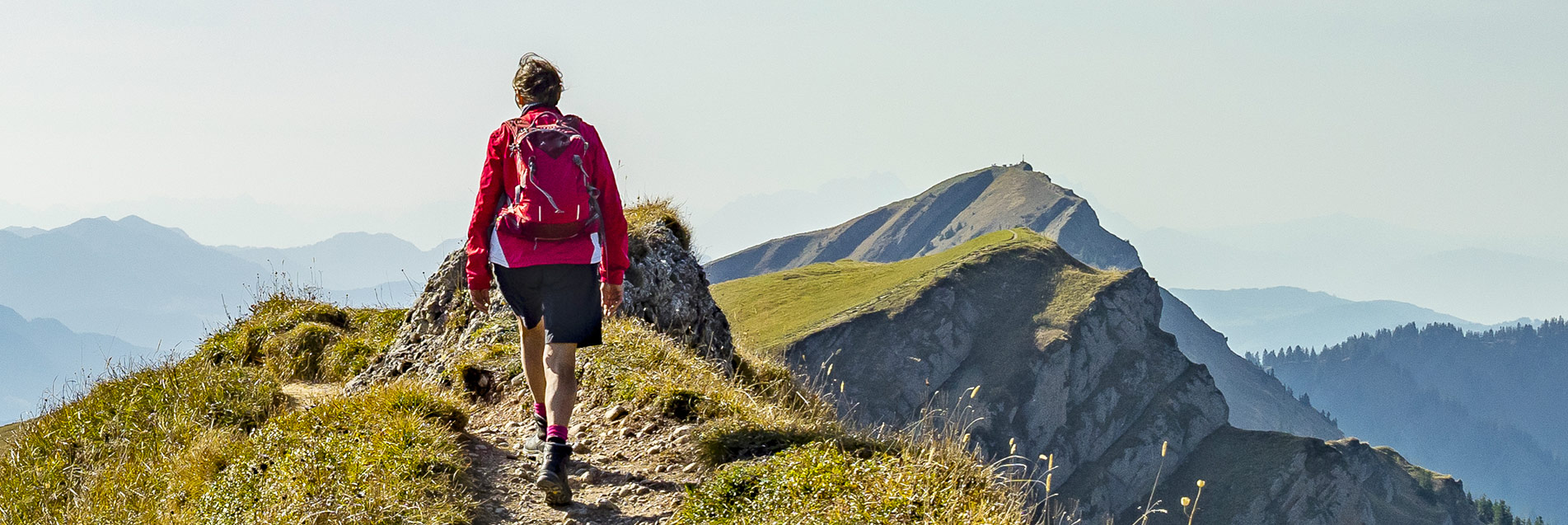Small Group Experiential Travel
Tour Code
tn1
Start
Tunis (TUN)
End
Tunis (TUN)
Tour type
Max Group Size
18
When To Go
Activity Level
Overnight in
- Overview
- Info & Inclusions
- Itinerary
- Map & Hotels
- Photos
- Dates & Prices
Price Includes
- Breakfast and dinner (hotels & local restaurants) daily. All transport, accommodation, sightseeing and entrance fees for sites noted as 'visited' in the detailed itinerary. Gratuities for local guides, drivers, restaurant staff, porters. Airport transfers for land & air customers and for early arriving / late departing land & air customers who book their extra hotel nights through us.
Exclusions
- International airfare to/from the tour. Tour Leader gratuities, lunches, drinks, personal items (phone, laundry, etc), international (if applicable) excursions referenced as 'optional'. Airport transfers for Land Only customers. Our post-reservation trip notes offer further guidance on optional meal costs and shopping.
Trip Info
- Seasonality and Weather:
This tour is offered in spring and late fall when temperatures are mild, crowds thinner, and airfares lower. Spring is popular with visitors who enjoy green landscapes and wildflowers. The region has a mild Mediterranean climate with early springs and autumns that are bright but cool. Showers are possible in spring and possible in fall. - Transport and Travel Conditions:
Transport throughout by private air-conditioned motor coach, 24-36 seats depending on ultimate group size (see 'group size'). Though we will have some full bus days, road travel is not particularly arduous as there are plenty of stops of interest. Roads are in good condition. Short ferry crossing to Djerba. Walking tours on uneven surfaces.
Am I suitable for this tour? Please refer to our self-assessment form - Accommodation:
Well-located, air- conditioned, mid-range hotels and inns (3-4 star) used throughout. All hotels have en suite bath, though some may have shower only. Porter service is usually available (see 'inclusions') though you should be independent with your luggage, especially at airports. Single rooms are limited and likely smaller than twins. - Activity Level: 1
No particular physical activity is involved other than town/city walks and short walks to dinners and sites of interest, some of which are large.
To learn more about the Activity levels, please visit our tour styles page. - Staff and Support:
Tour Leader throughout, local guide throughout (Tunisia), driver. - Group Size:
Maximum 18 plus Tour Leader
Download Itinerary
- Day 1:Arrive in TunisArrival in Tunis.
Tunis, the capital of the country, is a bustling metropolis and the home of one-sixth of the country’s population. Situated in the Gulf of Tunis on the Mediterranean Sea, the modern city extends along the coastal plains and to the surrounding hills. It is a city of many contrasts, with its modern office buildings, shopping malls and European cafes, the colonial French style of the Ville Nouvelle, and the dynamic Arab souks of Tunis' old Medina.
Overnight in Tunis.
Included Meal(s): Dinner - Day 2:Tunis: The Medina, Bardo Museum & CarthageWe begin the day with a walking tour through one of two UNESCO sites we visit today (two of the eight in the entire country) -- the old medina of Tunis with its narrow lanes crowded with mosques, tombs, and palaces. This was Tunis until the arrival of the French in the late 19th century, who subsequently built their quarters outside of the "Sea Gate" -- now the Ville Nouvelle. En route we will see the Great Mosque of Tunis, Jemaa Zitouna, and the elegant Place du Gouvernement.
We then visit the Bardo Museum, which houses the largest and finest collection of ancient mosaics in the world. These mosaics were discovered in the wealthiest of Roman villas in the many ancient cities found in Tunisia. Rich patrons commissioned a vast array of subjects and themes, from scenes of gods and goddesses, daily life (hunting, fishing, harvesting), the zodiac, seasons, amphitheatre games. From their exquisite details, we can understand why the North African school of mosaicists was the finest in the ancient world, and whose masterpieces can be found throughout the Mediterranean.
We continue to Carthage – the legendary city of Queen Dido and Hannibal (today's second UNESCO site ). We will begin with a visit to the ancient Punic cemetery -- the Tophet, or sanctuary to Baal and Tanit. Roman propaganda, hostile to their enemy, stated that the Carthaginians ritually sacrificed their children here to the gods. Our next stop is the Punic ports, once the foundation of Carthage's prosperity. Here we see the remains of what was once a sophisticated naval harbour, complete with ship sheds for dry-docking their warships, and a elaborate merchant harbor, for their fleets of cargo ships which engaged in trade throughout the Mediterranean. From here we visit Byrsa hill -- the ancient acropolis and the first area to be settled by the Phoenicians. Crowning the hill is the 19th century Cathedral of St. Louis and the Carthage museum with finds excavated from the city. Our final stop is the Antonine Baths -- the monumental public baths of the city. In the 2nd century AD, these were the largest baths in North Africa and the 3rd largest in the Roman world.
Overnight in Tunis.
Included Meal(s): Breakfast and Dinner - Day 3:Tunis: Bulla Regia & DouggaWe leave Tunis early this morning for Bulla Regia. This ancient site is famous for its unique subterranean villas, which belonged to the wealthiest of its inhabitants; we descend to see these luxurious villas and their splendid floor mosaics, still in situ.
After lunch we continue to Dougga, the best-preserved Roman city in Tunisia and a UNESCO World Heritage Site. The monumental Capitolium temple stands in the city's Forum, with a breathtaking view over the green rolling hills and plains below. The theaters, gymnasia, baths, shops, stone paved streets and lavish villas are all testimony to the golden age this North African city enjoyed during the Roman era.
Overnight in Tunis.
Included Meal(s): Breakfast and Dinner - Day 4:Tunis - Monastir - Kairouan: City TouringThis morning we leave the capital and head toward to Kairouan, travelling through the fertile valleys and rolling hills of the North. Since antiquity to the present, Tunisia is still referred to by other Maghreb countries by the epithet, "Tunisia the Green." This area is a favorite haven for storks, who build their nest on top of telephone towers, minarets and rooftops. We head toward into the Sahel, the transitional barren region between the fertile north and the Sahara desert to the south.
Our journey takes us to Monastir, where we see the 8th century ribat, a kind of fortified Islamic monastery after which the city is named. The Ribat of Monastir affords wonderful views of the city and the sea. North African ribats were built when the inhabitants were threatened by invading European armies; they served not only a military but religious purpose as well, as fortresses and places of prayer and study for devout soldiers. This spectacular ribat served as a backdrop in numerous films, including Monty Python's 'Life of Brian' and Zeffirelli's 'Jesus of Nazareth.'
The Holy City of Kairouan is not only the spiritual center of Tunisia, it is the first Islamic city to be established in North Africa, and the 4th oldest Muslim city outside of Arabia. Founded as the capital of the region in 670 AD by the Arab general Oqba ibn Nafi, Kairouan soon acquired magnificent ramparts, mosques, palaces and hammams. Our first stop is the Aghlabid basins, enormous artificial reservoirs constructed in the 9th century to store water for Kairouan, as part of a monumental system in which water was brought by aqueducts to the city from 36km away.
We visit the Great Mosque of Kairouan, the oldest, largest and most important mosque in Tunisia. The lowest story of the towering minaret is thought to date to 730 AD, one century earlier than the structure of the present mosque. Inside we will see the colonnaded courtyard with its ancient wellheads and sundials, and the forest of columns of the prayer sanctuary. The hundreds of columns all differ from one another, in marble types, size, shape and capital designs, since most were taken from ancient Roman sites and reused in the mosque's construction. Our final stop before leaving Kairouan is the Mausoleum of Sidi Sahab, also known as the Mosque of the Barber.
We finish our day with a walking tour of old medina of Kairouan -- the entire medina is protected by UNESCO. Meandering through the lanes, we will stop to admire the beautiful traditional doors and architectural styles, the main monuments, markets, pastry shops and traditional workshops.
Overnight in Kairouan.
Included Meal(s): Breakfast and Dinner - Day 5:Kairouan - Sbeitla - TozeurWe continue to the spectacular Roman city of Sufeitula -- modern Sbeitla. The Roman civic center is incredibly photogenic, due to the excellent state of preservation its three monumental temples dedicated to Juno, Jupiter and Minerva towering over the Forum. Sbeitla, like other North African cities, prospered in the 2nd and 3rd centuries AD under the Pax Romana. Upon entering the site, we will see olive press -- one of many in the city, since the inhabitants here became extremely wealthy from the trade of olives and olive oil. After visiting the forum and its temples, we will walk through Sbeitla's stone paved streets to see the public baths, the theater, and numerous Christian basilicas with their elaborate baptisteries covered in colourful mosaics.
Heading south, we arrive in the late afternoon at the fascinating oasis town of Tozeur. In medieval times, Tozeur was an important cultural and market center, due to its strategic location on the caravan routes. Merchants from North and West Africa gathered in this thriving oasis, trade such goods as wool, dates, gold, ivory, salt and slaves. Some of the finest dates of the world are grown in the region, the deglat nour or "finger of light". Medieval accounts state that over 1,000 camels used to leave here per day, laden only with dates!
On arrival we will visit the palmerie to view the various crops being grown, absorb the oasis atmosphere, and visit the Eden Palm Museum.
Overnight in Tozeur.
Included Meal(s): Breakfast and Dinner - Day 6:Tozeur - Douz - DjerbaOur journey continues eastwards across Chott El Jerid, Tunisia's largest salt lake, extending over 5,000km2. The chott lies 30m below sea level, and is a remnant from over 1.5 million years ago when the area was flooded by the sea. Water on the surface of the salt floor reflects strange hues of pink and yellow, and the refraction of light on this depression often creates mirages.
Our next stop is Douz, the "Gateway of the Sahara", another ancient oasis town surrounded by vast expanses of sand dunes. The final leg of our journey takes us to the legendary island of Djerba, where we will spend the first of two nights. Our drive takes us through one of the main olive growing regions of the country; Tunisia has over 65 million olive trees (6 for each inhabitant!) and is currently the 4th largest exporter of olive oil in the world.
Overnight in Djerba.
Included Meal(s): Breakfast and Dinner - Day 7:The Isle of DjerbaWe will spend the morning exploring the sites of this splendid island, the country's most recently-named UNESCO site. Originally settled by the Phoenicians, the isle of Djerba is the mythical place where Odysseus encountered the Lotus Eaters during his journey back home from Troy. Phoenicians, Greeks, Romans, Vandals, Normans, Arabs, Spaniards, and Ottoman Turks -- all have come to Djerba and left their footprint. Historically Djerba has been known for its sponge fishing and agriculture -- here we can find olive trees which are over 1000 years old. The island today is one of Tunisia’s most famous resorts, with its small villages, charming towns, and 125 km of sandy beaches. Today’s inhabitants of Djerba are culturally distinct from mainland Tunisians, and are proud of their customs, dress and dialect.
Our first visit is the excellent ethnographic Museum of Patrimonie, which celebrates the island’s peoples and traditions. Here we will see displays of marriage festivals and traditional wedding dresses from various parts of the country, traditional costumes of the island, circumcision ceremonies, household and agricultural implements, and displays of typical arts of weaving, calligraphy, jewelry and metalwork. We proceed to the center of Guellala, the pottery producing center of the island where we stop to see the kilns and workshops. Next is El Ghriba ("The Miracle") synagogue: one of the oldest synagogues and most important Jewish pilgrimage sites in the world. Djerba is home to one of the world’s most ancient Jewish communities: tradition states that they arrived here after the First Destruction of the Temple by Nebuchadnezzar in 566 BC. This holy synagogue is fascinating for its historic and spiritual importance, as well as for its distinctive style of architecture (a marvelous blend of Jewish, Tunisian, Maghrebian and Sephardic elements). We proceed to the main town Houmt Souq, where first we shall stop to see the medieval fort, Borj el Kebir; this was the scene of a bloody conflict in 1560 between the forces of Dragut, the Barbary corsair, and Philip II of Spain. In town, we will explore the fruit and vegetable markets, watch the excitement at the daily fish auctions, and wander the narrow lanes and souqs. You will have free time to explore more of this charming town, perhaps do some shopping and have lunch at one of the many restaurants in the center.
The rest of the afternoon is at leisure. You may wish to stay in Houmt Souq, go to the beach, or relax at the hotel.
Overnight in Djerba.
Included Meal(s): Breakfast and Dinner - Day 8:Djerba - Matmata - SfaxEn route to Sfax, we'll make a stop at Matmata, where the inhabitants live in rock-hewn dwellings ("troglodyte" homes), some of which are over 400 years old. We will visit the pit dwelling of a local family who will happily show us around. We will also stop to see the cave home which appeared in the first Star Wars film (1977) and was later converted into Hotel Sidi Driss.
Our drive continues to the coastal city of Sfax where we arrrive in time for a walk though the medina. This is the second largest city in Tunisia; today Sfax a major commercial and manufacturing centre (mainly of olive oil, almonds, phosphates and textiles) with very little tourism. Inside the massive 9th century ramparts of the old walled city, is the country's finest "living and working" medina.
On arrival we'll walk through the medina of Sfax; part of the Blacksmith's souq was featured in the film, 'The English Patient.' We will do a walk through the historic lanes, markets and workshops.
Overnight in Sfax.
Included Meal(s): Breakfast and Dinner - Day 9:Sfax - El Djem - Sidi Bou Said - TunisToday we travel to the impressive site of El Djem, the final UNESCO site featured on our tour.
Our first El Djem visit is the excellent Archaeological Museum, with its splendid collection of floor mosaics from the villas of the wealthiest inhabitants of El Djem. Just behind the museum is the House of Africa, an opulent villa covering over 3000 sq m which was found in the center of town, dismantled and moved here in its entirety. The villa is named after one of its excellent fine floor mosaics depicting the Goddess of Africa (the only mosaic of its kind in the world).
The sudden appearance of the massive Roman Amphitheatre is an extraordinary sight. With a capacity of 30,000 spectators, it rises 3 stories above the surrounding plains -- though smaller than the Colosseum in Rome, it is in many ways more impressive due to its excellent state of preservation. It was built during the reigns of the (usurper) Emperors Gordion I and his son, Gordian II, both of whom reigned for only a few weeks before being defeated by the legions sent from Rome. Wild beast fights, gladiatorial combats, circuses and games were held here. We climb up to the upper tiers for excellent views of the arena and surrounding countryside, before descending to the basement to see the chambers where scenery, gladiators, prisoners and wild animals were kept. Wild animals were hoisted by a sophisticated (if not theatrical) system of elevators and pulleys into the arena to the delight of the spectators.
Our final stop is Sidi Bou Said, a charming hilltop village famous for its beautifully decorated blue and white architecture. Situated approximately 20 km from Tunisia’s capital, this town gained fame as an artist’s haven as far back as the 18th century, and many artists, musicians and writers have lived, worked, and dreamed here. Though not rich with monuments, this picturesque location is a treat, with its cobbled streets, charming corners, vibrant atmosphere, and stunning views of the Gulf of Tunis.
Overnight in Tunis.
Included Meal(s): Breakfast and Dinner - Day 10:DepartureDeparture from Tunis.
BON VOYAGE!
Included Meal(s): Breakfast
Regions Visited:
Countries Visited:
Countries Visited:
*The red tour trail on the map does not represent the actual travel path.
The following is a list of sample hotels at some locations included on this tour. The hotels shown here are meant to provide a general sense of the standard of hotel we usually aim for; they are not necessarily confirmed for your chosen departure.
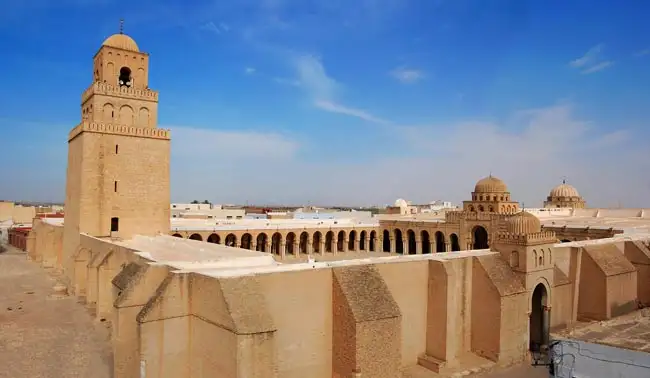
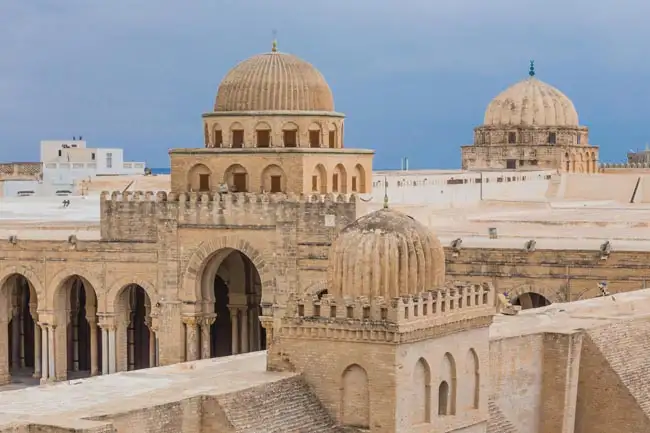
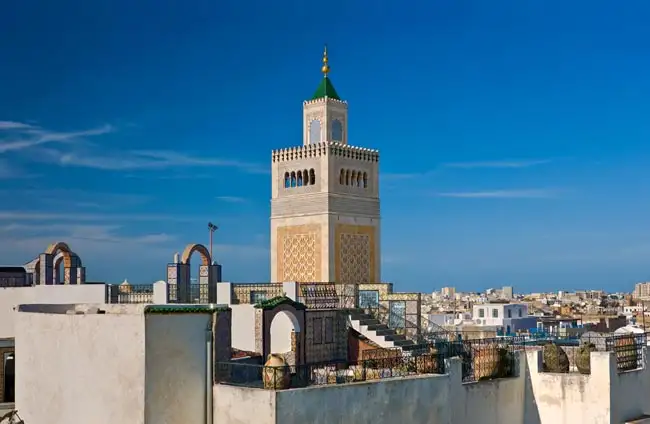
Excellent
Overall Rating
4.6
Extend Your Trip
This tour is part of a series that can be upgraded to make for a longer trip.
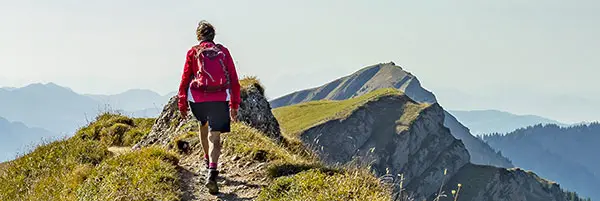
Fast and easy
Book this tour
Book your unforgettable adventure today! For any questions or advice, don't hesitate to contact us.
Have questions?
Contact Us
1-800-665-3998
- Final payment is due days prior to departure.
- A non-refundable $500 USD deposit is payable at the time of booking
- Optional Single Supplement: $650 USD (number of singles limited).
- Transferring to another tour or tour date is only permissible outside of 120 days prior to departure and is subject to a $100 USD change fee. (Read our cancellation policy for more info.)
Prices below are per person, twin-sharing costs in US Dollars (USD). Pricing does not include airfare to/from the tour and any applicable taxes. Get general information on flights to/from the tour.
Choose your departure date:
Frequently Asked Questions
- What is the maximum number of participants on a trip?Most of our tours carry a maximum of 18 participants; some tours (ie hiking tours) top out at 16. In the event that we do not achieve our minimum complement by our 90-day deadline, we may offer group members the option of paying a "small-group surcharge" as an alternative to cancellation. If all group members agree, we will confirm the trip at existing numbers; this surcharge is refundable in the event that we ultimately achieve our regular minimum. If the small group surcharge is not accepted, we will offer a refund of your deposit or a different trip of your choice.
- Can I extend my tour either at the beginning or end? What about stopovers?Yes, you can extend your tour either at the beginning or the end and we can book accommodation in our tour hotel. Stopovers are often permitted, depending on air routing. Stopovers usually carry a "stopover" fee levied by the airline.
- How do I make a reservation? How and when do I pay?The easiest way to make a reservation is via our website; during office hours, you are also more than welcome to contact us by telephone.
A non-refundable deposit is payable at the time of booking; if a reservation is made within 90 days, full payment is required. Some trips require a larger deposit. If international airline bookings require a non-refundable payment in order to secure space or the lowest available fare, we will require an increase in deposit equal to the cost of the ticket(s).
Early enrolment is always encouraged as group size is limited and some trips require greater preparation time.
Once we have received your deposit, we will confirm your space and send you a confirmation package containing your trip itinerary, any visa/travel permit related documents, invoice, clothing and equipment recommendations, general information on your destination(s), and forms for you to complete, sign and return to us. Your air e-tickets (if applicable), final hotel list, final trip itinerary, and instructions on how to join your tour, will be sent approximately 2-3 weeks prior to departure. - What about cancellations, refunds, and transfers?Please review our cancellation policy page for details.
- I am a single who prefers my own room. What is a single supplement?All of our tours have a single supplement for those who want to be guaranteed their own room at each location.
This supplement is a reflection of the fact that most hotels around the world do not discount the regular twin-share rate for a room by 50% for only one person occupying a room. Most hotels will give a break on the price, but usually in the range of 25-30% of the twin-share rate. This difference, multiplied by each night, amounts to the single supplement.
The conventional amount can also vary from country to country and some destinations are more expensive than others for single occupancy. In order to be "single friendly," the supplements we apply are not a profit centre for us and we do our best to keep them as reasonable as possible.
On most tours we limit the number of singles available, not to be punitive, but rather because many hotels allow for only a limited number of singles; some smaller hotels at remote locations also have a limited number of single rooms available.
Please note that most single rooms around the world are smaller than twin-share rooms and will likely have only one bed. - Do you have a shared accommodation program?Yes! If you are single traveller and are willing to share, we will do our best to pair you with a same-gender roommate. On most of our tours, if we fail to pair you, we will absorb the single supplement fee and you will default to a single room at no extra charge. At some destinations, however, where single rooms are not significantly discounted, or not at all, we may apply a "mandatory" single in the event that we cannot find you a share partner. This is usually 50% of the usual supplement, but can be as much as 100%. If applicable, this proviso will be noted on each tour page on this website, on your invoice, and in our tour date/price book (available for download under "Resources").
Please choose a departure date!
